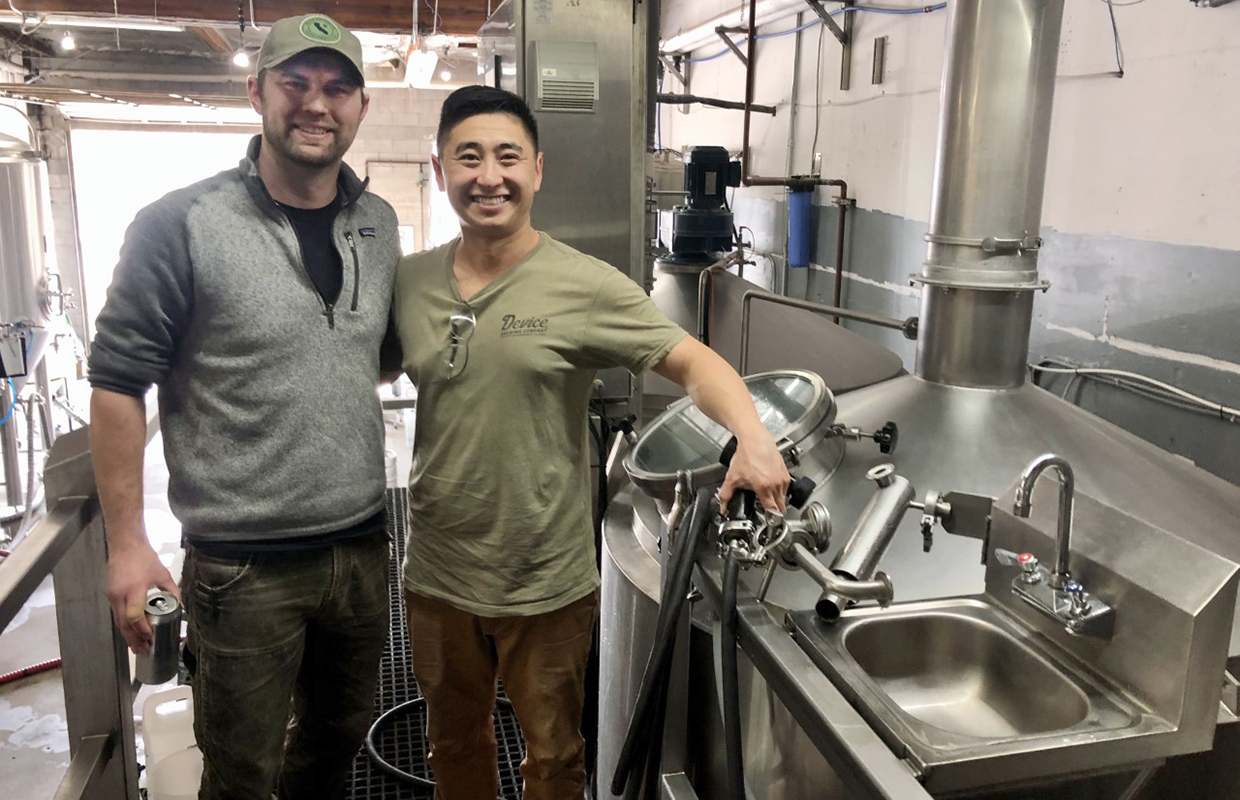
Device Brewing hasn’t had to alter its identity as a brewery through 10 years now open in the Sacramento area, but staying content isn’t what has kept the door open, owner Ken Anthony told Brewer recently.
“Every brewery should be evaluating what they’re doing and what the consumer wants, otherwise you become old hat,” he said. “Being now 10 years in, we are certainly threatened by that stigma of being kind of a ‘Oh, yeah, they’ve been around for a while,’ kind of brewery.”
One of the brewery’s pillars is quality and consistency.
“That’s something that no matter what kind of beer we’re brewing, no matter if we get into any other market sector within our license, we will always be focusing on quality and consistency,” he said. “Because if we don’t do that when the shine wears off, you’ve got to be able to retain your customer base.”
Device opened at a time when there were not a lot of craft breweries operating and its original taproom and production headquarters are located in an industrial area versus the two other taprooms Anthony and his staff have opened since catering to different audiences in the capital of California.
“Not being the new hot brewery in the area — we’re a well-established, well-known brand — but people do associate us with quality,” Anthony said. “There’s no question about that. One comment I’ve heard over and over again is, “It’s always good. It’s never hit or miss. Even if you make an IPA that’s not my favorite IPA, it’s still a well-made IPA.
“That’s recipe, that’s not execution.”
Execution, like taking the time to make a proper hard seltzer and not trying to push it to retail has helped drive new patrons to the brewery’s three spots — especially the suburban Pocket location and the Midtown spot. It took some time, effort, and cost, but it’s been a big boon to the bottom line.
“I encouraged the brewers to think about a seltzer,” Anthony said. “I love these guys, I think one of the best things that they have going for them is they won’t do anything unless they’re sure they’re gonna do it right.”
It took a better part of a year, from the first conversation to the first batch of seltzer released, he said. There was equipment they needed to purchase.

“We needed a plate-and-frame filter, because we never filtered anything before, just Biofine,” Anthony said. “In order to run that plate-and-frame filter, we needed a positive displacement pump. It was about $20,000, just in equipment investment, to be able to do it. But if we want to have a clear seltzer that looks and drinks like an actual seltzer — because we were seeing … murky, hazy, with fruit juice or adjunct in it.
“I understand that technically that’s a hard Seltzer, but it looks like a fruited hard seltzer where we get an all-natural, clear fruit extract in liquid form. It doesn’t really change the clarity of your product. And the flavors are all natural.”
Putting that effort in has helped produce a seltzer that people love, but they can only get it at the brewery.
“It drives them to our taprooms,” Anthony said. “We briefly had a conversation with one of our distributors for the 12 counties surrounding Sacramento. None of the chains wanted any new seltzer SKUs because they’d already started to see the peak and then the drop by the time we were coming to market with it, and no more.
“This is something that we can kind of keep to ourselves. When we serve it on draft, it’s a pain in the ass with as many volumes of co2 as we have in it. But we do well with it. Feels like almost half the people in the building are drinking seltzer.”
Photo of hard seltzer courtesy Device Brewing; main photo of brewers Ian & Adrian by Jon Sicotte






Be the first to comment